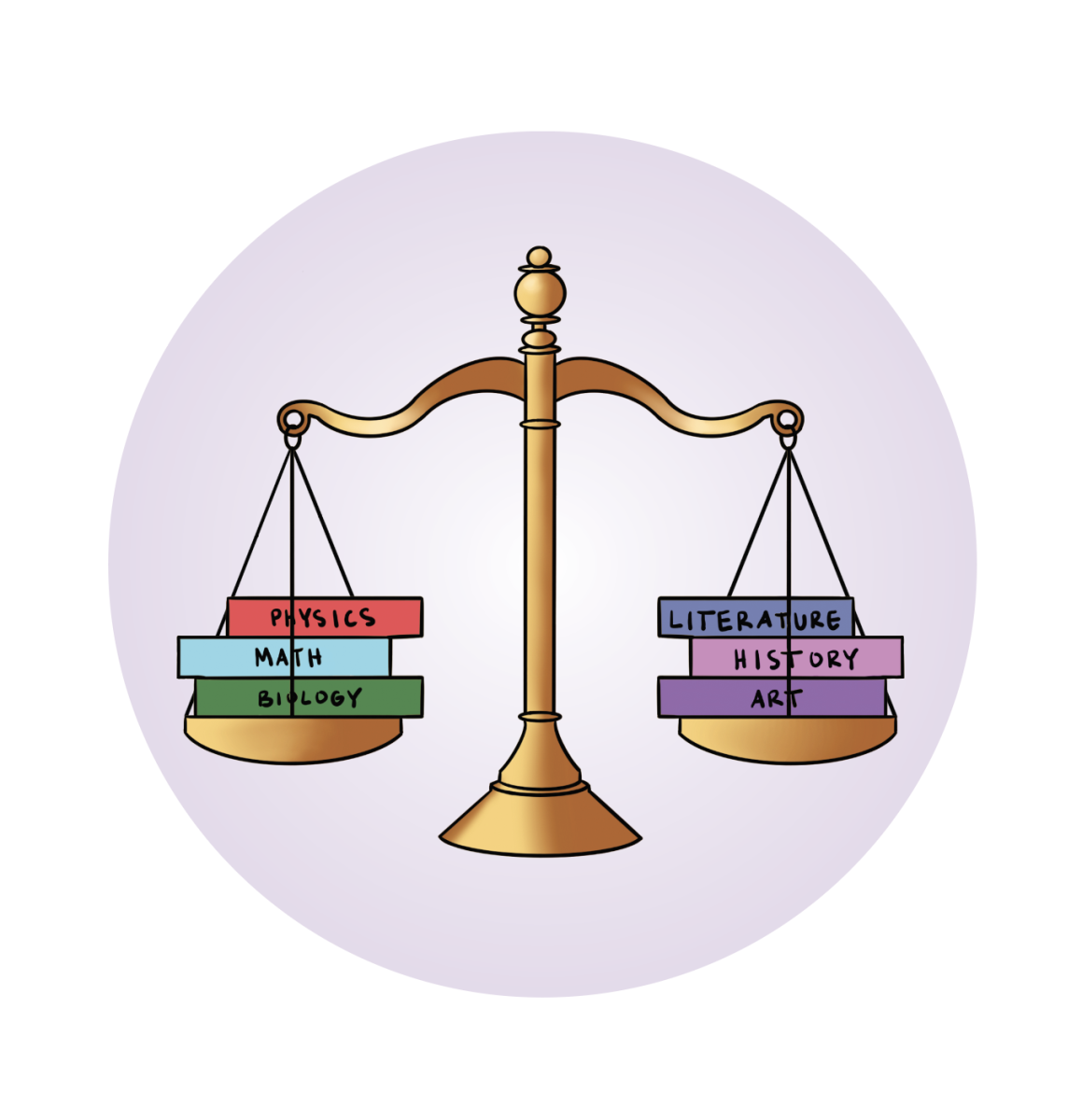It’s February, and that means that another round of course selections has come and gone. Students scramble to find a balance between classes that show rigor and ones that they anticipate succeeding in. But for many, it means finding the maximum amount of Advanced Placement and honors courses that they can physically handle in order to boost their GPAs and appeal to colleges.
Although Palo Alto High School’s administration recommends that students take a maximum of two AP courses per year, it’s common to see students taking well over that amount, often taking four or more, regardless of their interest in them. The competitive effect this has on the student body and campus culture perpetuates a harmful narrative about how we define student success in such a competitive environment. It comes down to this: why are so many students taking classes that they claim to hate and sticking with them for years?
In my junior year, I chose to leave the Honors science lane and take the standard Physics course because I was seeking out classes that aligned more with my interests and future goals, like AP English Language and Composition and AP U.S. History. It was a hard choice, not because I was particularly interested in taking Physics H, but because I felt that my value as a student had diminished. Going into the school year, I was skeptical of the change, but soon I found that I felt so much freer in that I was finally able to prioritize my workload based on what was meaningful to me.
Letting go of advanced science coursework has also allowed me to better understand who I am as a student and what truly intrigues me. I encourage other students to consider enjoyment when making their course selections rather than only what looks good on paper. Lightening my load in some areas in order to focus elsewhere has made a difficult year more bearable, and most importantly, it allows me to feel that the effort that I put into my school work will truly benefit me in the future.
Rethinking my course decisions was so hard for me because it meant a farewell from more advanced STEM courses, which I had come to see as the No. 1 indicator of my value as a student. The emphasis that the Palo Alto Unified School District and the students and parents it serves place on excellence in math and science is immense, and it shows in the way students and parents respond to their policies: No wonder the district has been sued twice in the past three years over their math placement policies.
As former Kentucky governor Matt Bevin so aptly stated in 2016, “All the people in the world that want to study French literature can do so, they are just not going to be subsidized by the taxpayer.” But are humanities and liberal arts students really all that unemployable? According to the New York Times, skills that come with a liberal arts education, like writing and problem-solving, are incredibly useful when it comes to the job search.
As I see it, this assessment of how different fields are useful to society is narrow-minded. Effective communication — a key tenet of humanities education — is a skill that can be applied to anyone’s life, regardless of their intended major or career path. Any workforce needs people to write their proposals, their marketing materials and their annual reports. Be it banking, business or biology — everybody needs a writer.
For PAUSD students and parents: take a moment to consider the benefits that may arise when a student steps away from classes they don’t enjoy as much and into ones that they do, even if that means stepping away from an honors or AP class and into a lower one. After all, what value does academic excellence have without an understanding of the things we enjoy when we step off of the graduation stage and into the real world?


